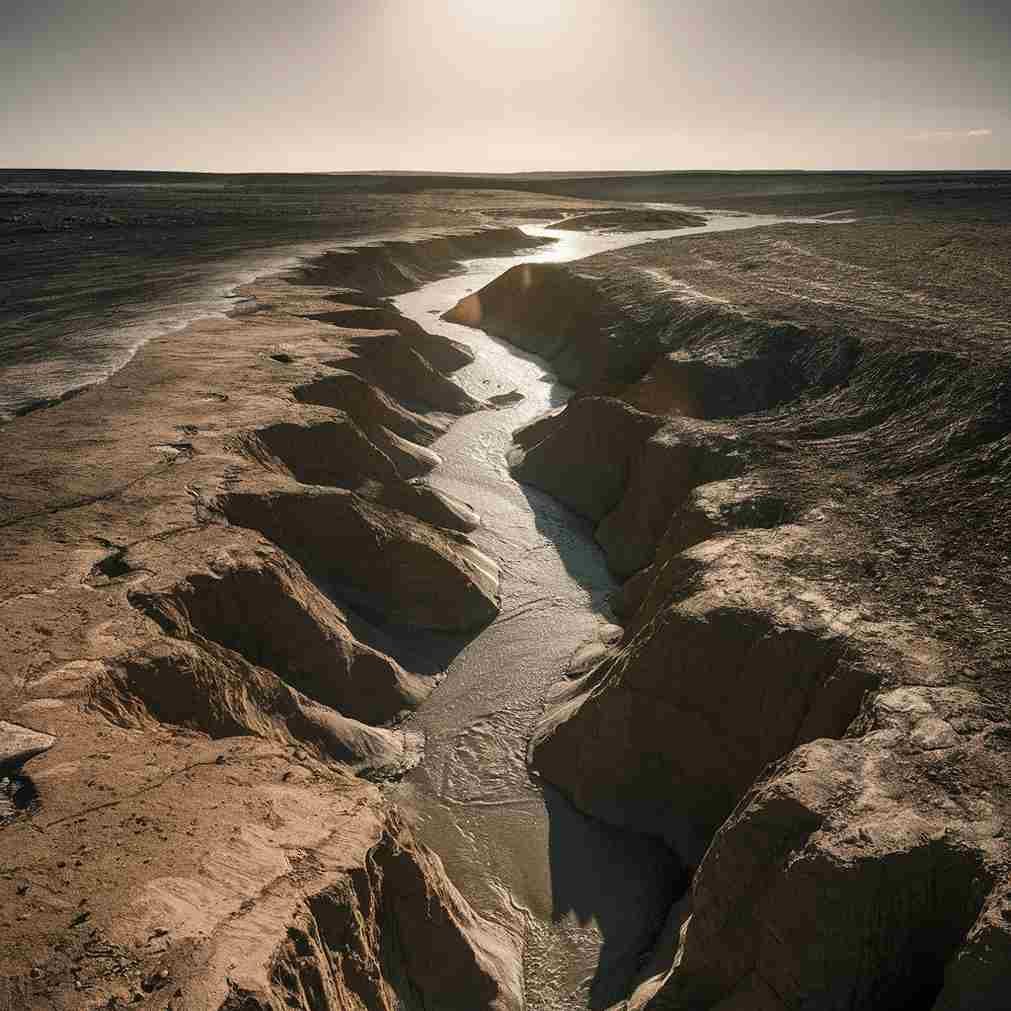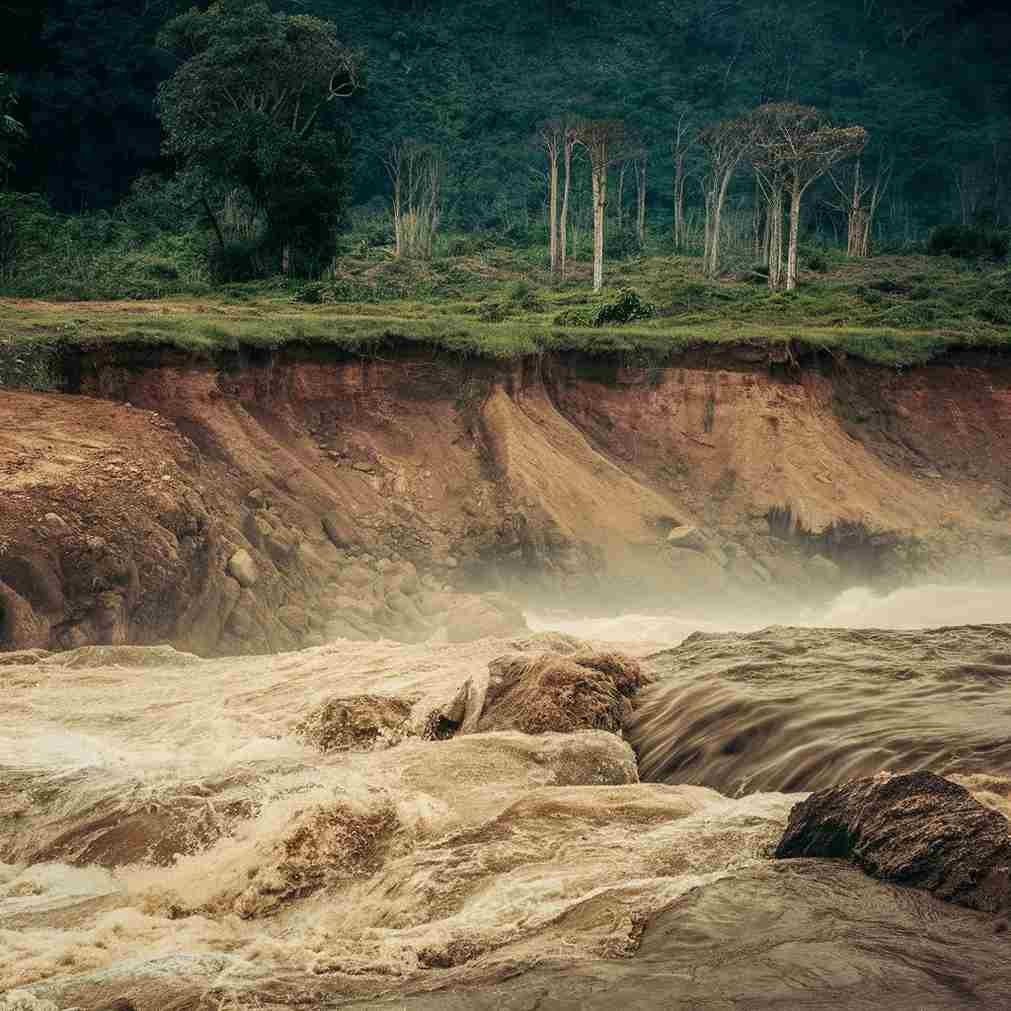Water erosion is the process by which soil is carried and worn down by water, mostly from surface runoff and rainfall. There are several different kinds of erosion, including gully, rill, and sheet erosion. They are all distinguished by the way that channels form and how much dirt is displaced. Water erosion can have an adverse effect on ecosystems, agriculture, and water resources by causing the loss of productive topsoil, deteriorating land quality, and sedimenting water bodies. To reduce the negative consequences of water erosion and manage land resources sustainably, effective erosion control techniques and conservation measures are crucial.
Definition of Water Erosion

Water action, mainly from rainfall, surface runoff, and moving water in streams and rivers, is what causes soil particles to get dislodged, moved, and deposited. This process is known as water erosion. There are several kinds of erosion, including gully, rill, and sheet erosion. They are all distinguished by the way that unique erosion structures are formed and by how much material is moved. Ecosystems, agriculture, and water resources can face serious issues due to water erosion, which can result in the loss of productive topsoil, deterioration of land quality, and sedimentation of water bodies. In order to limit the negative consequences of water erosion and manage land resources sustainably, effective erosion control strategies and conservation techniques are crucial.
Types of Water Erosion
The different types of water erosion are explained below:
- Sheet erosion: The uniform disappearance of a thin layer of soil from the whole surface, frequently brought on by surface movement and the action of rainfall.
- Rill Erosion: Usually occurring on sloping terrain, this process results in the formation of narrow, shallow channels (rills) in the soil surface due to concentrated water flow.
- Gully Erosion: Usually the result of concentrated runoff and erosion in rills, gully erosion is the formation of broader and deeper channels (gullies) in the soil.
- Streambank Erosion: When water flows forcefully over a stream or riverbank, soil is eroded, widening the channel and eventually collapsing the bank.
Factors Affecting Water Erosion

- Rainfall Intensity and Duration: When there is a lot of rainfall, especially on exposed or sparsely vegetated soil surfaces, erosion rates rise.
- Slope Gradient: Because gravity increases the erosive force of water flow, steeper slopes are more prone to erosion.
- Texture and Structure of the Soil: The features of the soil, such as its texture (such as sand, silt, or clay) and structure, affect how susceptible it is to erosion; sandy soils are more likely to erode than clayey soils.
- Vegetative Cover: By absorbing rainfall, stabilizing the soil, and lowering surface runoff, vegetation—such as grasses, bushes, and trees—acts as a protective cover and lowers soil erosion.
- Soil Moisture Content: Because dry soils have less cohesiveness and are more prone to breaking apart and being carried by water, they are more prone to erosion.
Losses Due to Water Erosion
The ecology, agriculture, and soil are all negatively impacted by losses resulting from water erosion. These losses consist of:
- Loss of Topsoil: The rich, organic-matter-rich, nutrient-rich layer of soil that is eroded away by water erosion is also devoid of healthy microbes. Crop yields are affected by the removal of topsoil, which lowers soil productivity.
- Soil Compaction: Surface runoff rises and infiltration rates decrease as soil is compacted by erosion. Because compacted soils have a decreased capacity to absorb water, there is more erosion and less water available for plants.
- Nutrient Loss: The soil loses vital nutrients including potassium, phosphorus, and nitrogen as a result of erosion. These nutrients, which are essential for plant growth, are frequently washed away by eroded soil particles, depleting the nutrients in the soil and reducing its fertility.
- Sedimentation: Runoff carries eroded soil particles to lakes, rivers, and reservoirs where they are deposited. Aquatic habitats, aquatic ecosystems, and water quality can all be negatively impacted by this sedimentation.
- Reduced Water Quality: Pollutants include pesticides, fertilizers, and organic matter can enter water bodies through sediment-laden runoff from eroded areas. This pollution can harm aquatic life, deteriorate the quality of the water, and endanger public health.
Conservation Practices
- Contour Plowing: To lower water flow velocity and erosion rates, plough across the contour lines of slopes.
- Terracing: Building level platforms, or terraces, on steep inclines to make level regions for farming and lessen erosion and water flow.
- Cover Crops: To preserve soil, lower erosion, and enhance soil health, plant cover crops such legumes, grasses, or cover crop combinations.
- Mulching: On prevent erosion, hold onto soil moisture, and inhibit weed growth, apply organic or synthetic mulch materials to the soil’s surface.
- Conservation Tillage: To preserve soil structure, lower erosion, and enhance water penetration, minimize soil disturbance by using reduced tillage or no-till techniques.
- Grassed Rivers: On sloping terrain, creating planted waterways or channels to transfer surface runoff and lessen erosion.
To summarize, the ecology, agriculture, and soil health are all seriously hampered by water erosion, which takes the form of gully, sheet, and rill erosion. Water erosion causes the loss of productive topsoil, nutrient depletion, sedimentation of water bodies, and ecosystem degradation. It is influenced by various elements, including rainfall intensity, slope gradient, soil qualities, and land management actions. However erosion rates can be reduced and its negative effects can be lessened by using conservation techniques such plant cover, contour plowing, terracing, and sediment control structures. These activities contribute significantly to the prevention of water erosion and the long-term health and productivity of landscapes by protecting soil resources, improving water quality, and encouraging sustainable land management.
Frequently Asked Question(FAQ)
What is water erosion?
Rainfall, surface runoff, and water moving in streams and rivers are the main ways that water causes soil particles to get separated, moved, and deposited. This process is known as water erosion.
How does water erosion affect agriculture?
Water erosion can cause problems for agricultural productivity and food security by lowering crop yields, degrading soil fertility, and resulting in the loss of arable land. The maintenance of agricultural livelihoods depends on the use of erosion control techniques.
Related Articles

